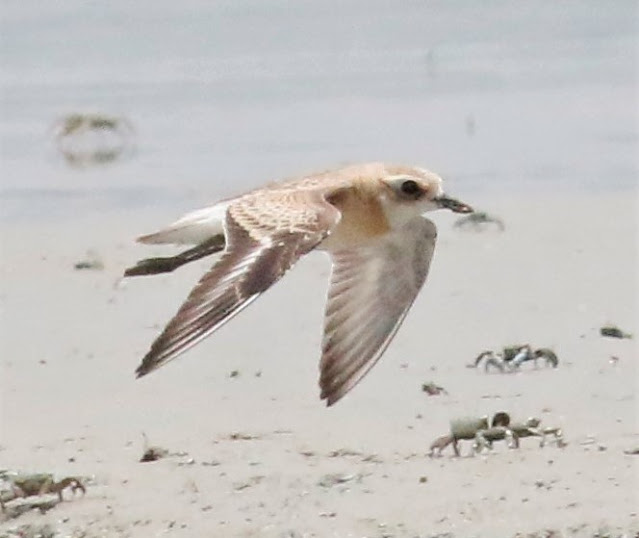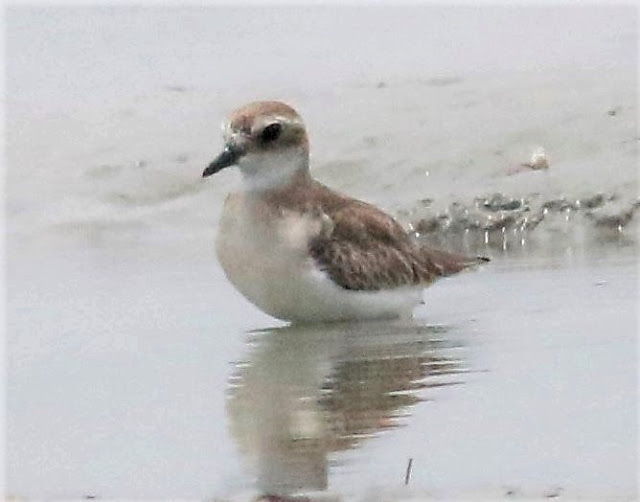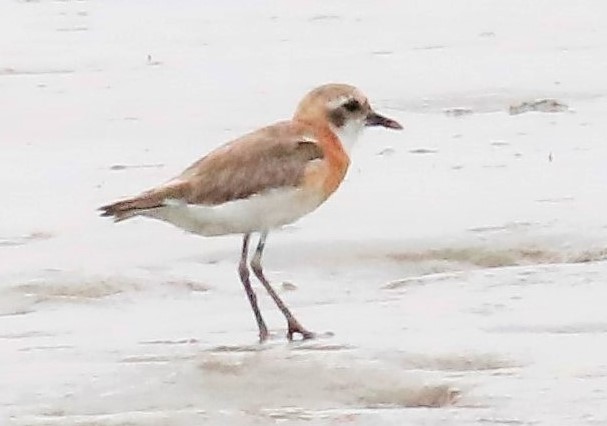According to most literatures, there are currently 5 subspecies of Lesser Sand Plover (LSP). They are as follow:
i) Charadrius mongolus mongolus - breed in more easterly countries eg Siberia
ii) Charadrius mongolus stegmanni - breed in more easterly countries eg Siberia
iii) Charadrius mongolus pamirensis - breed in more westerly countries
iv) Charadrius mongolus atrifrons - breed in more westerly countries
v) Charadrius mongolus schaeferi - breed in more westerly countries
According to Avibase website:
C.m mongolus - from East Siberia & Russian Far East; winters from Taiwan to Australia.
C.m stegmanni - from Kamchatka to Chukotsk Peninsula; winters to Australia
C.m atrifrons - from the Himalayas & Southern Tibet; winters from India to Sumatra
C.m schaeferi - from eastern Tibet to Southern Mongolia; winters from Thailand to Greater Sunda
Here are some of the basic feather tracts of a LSP view from above.

Aging of Lesser Sand Plover (LSP)
Unlike many passerine / song birds which shed their juvenile plumage and molt straight into adult plumage, LSP like most waders are birds that molt twice per year i.e they would have two adult plumages - adult winter and adult breeding plumage.
According to Dave Bakewell, a local expert on shorebirds/waders here, "an adult LSP in non-breeding plumage has an irregular appearance of the wing coverts as compared to the neat, similar-sized coverts of a juvenile". This is because juvenile feathers develop all at the same time and as such they tend to look neat and uniform in shape and size. Adult feathers on the other hand often appear haphazard due to the different stages of growth or wear.
The above is a juvenile LSP
Inexperienced observers often tend to identify scruffy birds as juveniles and neat ones as adults, but it's more often the other way around, said Bakewell. As juvenile feathers are smaller and uniformly aged than adults, they typically look neat and "well arranged".
In autumn, adults can easily be told from juveniles by the uneven trailing edge of the wing, caused by new feathers growing out and the presence of "unmolted", ragged-ended old feathers.
According to Bakewell, all waders except juveniles (of most species) undergo a complete moult in the autumn, like the one above and below.
However there are a few exceptions. I have noticed that some adults do keep some of their post summer plumage like these ones below:
According to Bakewell, those which still have traces of their summer plumage are most likely LSP.
Identifying Lesser Sand Plover (LSP)
There are a few notable field marks which have been identified by literatures to described a LSP or more importantly to differentiate them from a Greater Sand Plover (GSP). The important characteristics are;
i) the shape and length of the bills
ii) the shape and length of the body
iii) the color of the legs
iv) the size of the eyes
i) the shape and length of the bills
LSP's bill is generally shorter and more blunt tipped than GSP. However, it is also reported that there are some subspecies of GSP which bill has similar length to a larger LSP. When this happens, literature suggested that we look at the bluntness of the tip of the bill.
Apparently, the more westernly/southernly LSP of the C.m schaeferi race for example are characterised by relatively longer bills than the northern/eastern C.m mongolus LSP.
ii) the shape and length of the body
Structurally, a GSP has longer body than a LSP and in flight has broader wings. There are times, however, a photo may caused some disillusioned like the photo below:
I have initially thought that the bird on the left is a GSP which appears to have longer legs and body but alas both of them are actually LSP as pointed out by the waders experts here.
iii) the color of the legs
The color of the legs of a LSP is generally darker, ranging from black to grey while in a GSP, it is much paler, ranging from yellowish to light grey.
iv) the size of the eyesThe size of eyes of a LSP is relatively smaller than a GSP.
In terms of plumage, most GSP would complete its feather molt during their southern migration, according to Bakewell. The one in the middle of the photo below is a GSP. The photo was taken in August 2020.
Hope you have enjoyed reading the above writeup as much as I have bringing it to you !























No comments:
Post a Comment